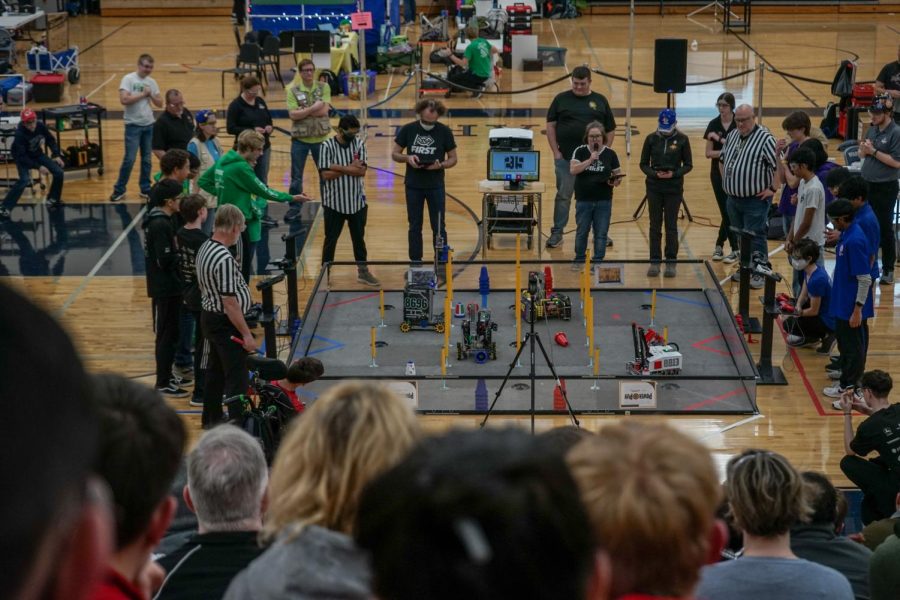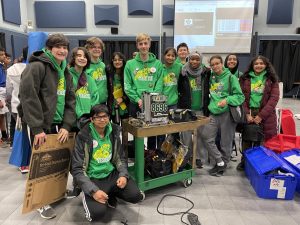FTC versus FRC
FTC and FRC are both annual robotics competitions that engage students in STEM; however, there are a few key differences.
May 26, 2023
FTC (First Tech Challenge) and FRC (First Robotics Competition) are robotics competitions for students that want to engage in science, technology, engineering and mathematics fields. However, there are a couple of differences between them:
Scale and Team Size: FTC is organized for students in seventh through 12th grade, while FRC targets high school students. FTC is designed for teams with a maximum of 15 members; the competition field is typically 12 feet by 12 feet. FRC has no limits on team size and the competition field is 27 feet by 54 feet.
Robot Complexity: FTC robots have size constraints, usually within an 18-inch cube. FRC robots have more flexibility in terms of size and weight (up to 120 pounds) and often have greater complexity and sophistication compared to FTC robots.
Competition Structure: FTC and FRC competitions both consist of regional tournaments, state championships and a global championship. The game challenges change each year, requiring teams to adapt and strategize accordingly. FTC matches involve alliances of two teams working together, while FRC alliances involve three teams working together.
Time and Resource Commitment: FTC teams generally require a smaller time commitment compared to FRC teams. The build season for FTC is shorter (starting in September or October) compared to FRC teams (starting in January). The more complex FRC robot design also requires greater resources from the team.
Cost and Accessibility: The cost of participating in FTC is generally lower compared to FRC in terms of materials, components and registration fees. FRC can be more expensive due to the larger robot size, more advanced components and higher registration fees.
Both competitive robotics teams learn essential skills such as problem-solving, collaboration and critical thinking. They provide students with hands-on experience in robotics and engineering. They also offer opportunities for networking, mentorship and scholarships, contributing to the growth of future engineers.
Check out information about local Children of the Corn 167 (FRC) and Trobotix 8696 (FTC) teams here.











